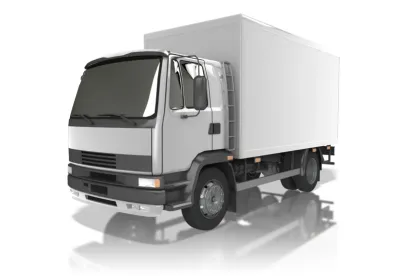A new Executive Order by North Carolina Gov. Roy Cooper aims to accelerate the state’s shift to zero-emission trucks and buses. The Executive Order is designed to increase the availability of zero-emission medium- and heavy-duty vehicles, such as delivery vans, box trucks, semi-tractors, garbage trucks and school buses. It also sets manufacturer sales targets for these vehicle sales and commissions an infrastructure study to identify what is needed to adequately support zero-emissions technology vehicles.
North Carolina Executive Order 271 comes as the U.S. and other nations are ramping up formal efforts to reduce greenhouse gas emissions and address climate change. While Executive Order 271 sets a clear policy direction, many details of how this policy will be implemented remain undecided—and won’t be settled for some time.
The Order directs the North Carolina Department of Environmental Quality (NCDEQ) to work with stakeholders and develop a program called the Advanced Clean Trucks or ACT program. The ACT program is supposed to ensure an adequate supply of zero-emission buses and trucks are available for purchase in the state and help the state reduce its emissions of criteria air pollutants. The ACT would not apply to off-road vehicles, such as farm equipment or construction vehicles.
In addition, the Order states the ACT program will require that certain vehicle manufacturers sell an increasing percentage of zero-emissions buses and trucks in their overall sales totals. According to a press release from Gov. Cooper’s office, manufacturers would be responsible for offering zero-emission vehicles sales shares of 10 – 13 percent in 2026, increasing to 40 – 75 percent in 2035, depending on vehicle size. The NCDEQ is directed to submit rules for the ACT program no later than May 15, 2023. Technology know-how and costs are two important variables that will have to be addressed for this planned market shift.
Another key component of Executive Order 271 calls for the development of the North Carolina Zero-Emission Vehicle Infrastructure Needs Assessment. This Assessment would identify the charging and fueling infrastructure needed to support the state’s growing number of zero-emissions vehicles. According to a press release from Gov. Cooper’s office, “The sales targets would also drive investment in other zero-emission technologies including charging and fueling infrastructure, while bolstering North Carolina’s competitiveness in seeking billions of dollars in federal funding for clean energy development.”
The Order also has a public health and economic justice component, calling for North Carolina Department of Health and Human Services (NCDHHS) to continue to evaluate the impact of air pollution on the state’s low-income and minority communities.
The new Order builds on Gov. Cooper’s sweeping Executive Order 246. Issued in January 2022, Executive Order 246 affirms the state’s commitment to reduce statewide greenhouse gas emissions to at least 50 percent below 2005 levels by 2030 and achieve net-zero emissions as soon as possible, but no later than 2050. To help achieve those goals, Executive Order 246 calls for North Carolina to increase the total number of registered zero-emission vehicles to at least 1,250,000 by 2030 and strive to have 50 percent or more of its in-state sale of new vehicles be zero-emissions vehicle by 2030.
Again, the details have yet to be finalized, but manufacturers of medium- and heavy-duty trucks will want to closely follow the proposed rules expected next quarter for the ACT program. Additionally, companies looking to replace trucks and buses or add to their vehicle fleets should keep a close eye on North Carolina’s Advanced Clean Trucks Program. It is quite probable that such a program will include significant incentives for purchasing zero-emission vehicles. The federal Inflation Reduction Act provides electric vehicle tax incentives of up to $40,000 per truck and infrastructure credits of up to $100,000 per electric vehicle charger. Companies will also want to follow the Infrastructure Needs Assessment to evaluate when the needed infrastructure will be available. So for long-term planning, companies would be well-advised to keep a close eye on the developing ACT program.




 />i
/>i

